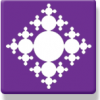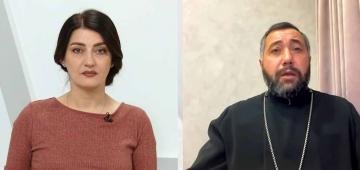 |
Rev. Father Arakel Amiryan
What is Leviticus 19:19 about?
How to understand the biblical message: “What God has joined together, let no man separate”
What church ceremony should be performed when a couple marries for the second time?
What does the Feast of the Holy Cross have to do with the deceased?
How to understand the Lord’s words: “Come to me, all you who are weary and burdened, and I will give you rest”
Father Arakel Amiryan answered the questions of viewers and users. Write your questions on the “Questions and Answers” Facebook page.
|
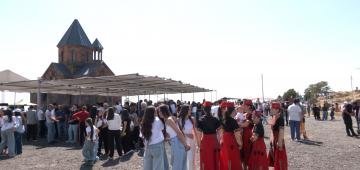 |
The Church of the Holy Mother of God in the village of Nerkin Bazmaberd has been consecratedThe church was started to be built in 1991, thanks to the efforts of Henzel Yeghiazaryan, a resident of Nerkin Bazmaberd, who left for the front two years later. Due to financial difficulties, the construction of the church was stopped. In 2020, after the death of Henzel Yeghiazaryan, his children tried to continue the work started by their father, but due to the war, the construction was stopped again. In 2024, the Istanbul-Armenian philanthropist Yeprem Bagh took over the construction of the church and completed it. |
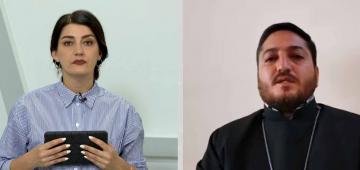 |
Rev. Father Beniamin Tsaturyan
Why do people ask a priest to bless salt
How do the sacraments of the day arise
Who are the three great saints of our church
How often does a priest have to celebrate the obligatory liturgy
How to replace a worn-out icon
Is it possible to pray for the repose of the souls of suicides
Father Beniamin Tsaturyan answered the questions of viewers and users. Write your questions on the “Questions and Answers” Facebook page.
|
 |
The Church of the Holy Mother of God in Haghartsin, which has been inactive for over a century, has been reconsecratedThe Primate of the Aragatsotn Diocese, Bishop Mkrtich Proshyan, anointed the holy altar, baptismal font, columns and cross of the church with holy light. The Holy Mother of God opened its doors to the residents of Haghartsin, Teghut, Hovk and neighboring communities. The church was built in 1848, but in 1902 the wooden roof collapsed. Khrimyan Hayrik allocated money to rebuild the church, but the money was spent on the needs of the poor. More than a century later, the church was rebuilt with the efforts of the residents of Haghartsin. |
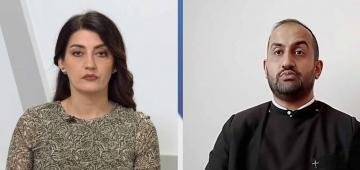 |
Rev. Fr. Artavazd SimonyanWhy can't girls study at the Armenian Apostolic Church?
|
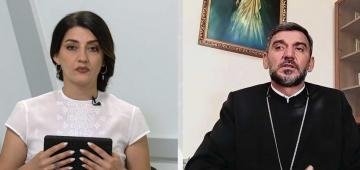 |
Rev. Fr. Nerses Rushanyan
Are there special prayers for mothers
How did the crucifixion of the Son of God become reconciliation between man and God
Do they believe with their hearts or through spiritual knowledge?
In what way can broken relationships with a loved one be restored?
Are there short and long versions of baptism and wedding ceremonies?
The questions of viewers and users were answered by Father Nerses Rushanyan. Write your questions on the “Questions and Answers” Facebook page.
|
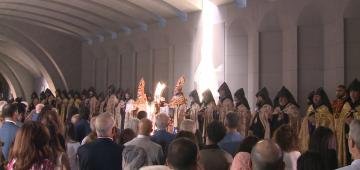 |
The Catholicosate Mausoleum and Candlelight Hall were opened under the auspices of His Holiness the PatriarchThe Catholicos' Mausoleum is located in the center of the structure, the right and left sides are intended for lighting candles. The structure also has two altars, which His Holiness consecrated and named after the apostles Thaddeus and Bartholomew. For the architects of the underground, vaulted structure, which occupies an area of about 1000 square meters, it was of fundamental importance to maintain the harmony of the modern structure with the historical structures existing in the area. The Eternal Catholicos of Armenia noted that the Mausoleum will remind future generations of the spiritual mission of all Armenian Catholicoses, which improved the national and church life of the entire Armenian people. |
 |
The Patriarch of All Armenians received a group of pilgrims from New YorkHis Holiness the Patriarch issued a call for hope, peace, and love and urged them to bear witness to their faith and devotion through their deeds, not words, wherever they may be. The Catholicos of All Armenians discussed church-state relations with the pilgrims. |
 |
Rev. Fr. Ararat ShahverdyanHow to understand the words of the Gospel of Matthew: “If you want to accept it, John is Elijah who is to come.”
|
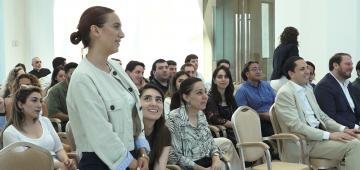 |
AGBU Focus Program participants met with His Holiness Karekin II, the Patriarch of All ArmeniansIn about 28 countries, under the auspices of AGBU, Young Professionals Groups operate, implementing community projects, often for the motherland. Young Professionals Groups hold their joint gathering in a different country every two years. The Patriarch of All Armenians has noted that this is how young people love and become attached to their homeland. |
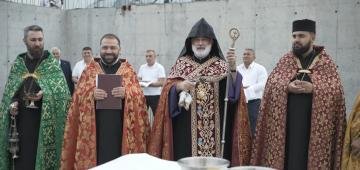 |
The foundations of a new church were blessed in the Ukrainian city of KhmelnytskyiThe Primate of the Armenian Diocese of Ukraine, Bishop Markos Hovhannisyan, consecrated 16 stones, then they were embedded in the foundations of the church under construction. This is the first Armenian church in Khmelnytskyi. The architect is Andranik Sargsyan, a native of Armenia. The church will be domed, and a Sunday school will also operate on the territory. The church is being built with the financial support of Armenian believers living in different regions of Ukraine, as well as Ukrainian friends. |
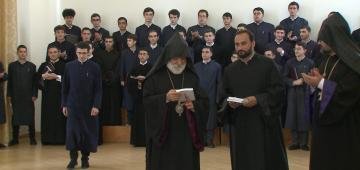 |
11 deacons graduated from Gevorgyan Theological SeminaryAt the closing ceremony of the 2024-2025 academic year of the Seminary and Vazgenyan Theological Seminary, 3 students from each classroom received encouraging gifts for their progress. The Armenian Apostolic Church Choir, led by Artashes Baburyan, performed a musical recital for the Brotherhood of the Mother See and long-time lecturers of the Seminary. |
